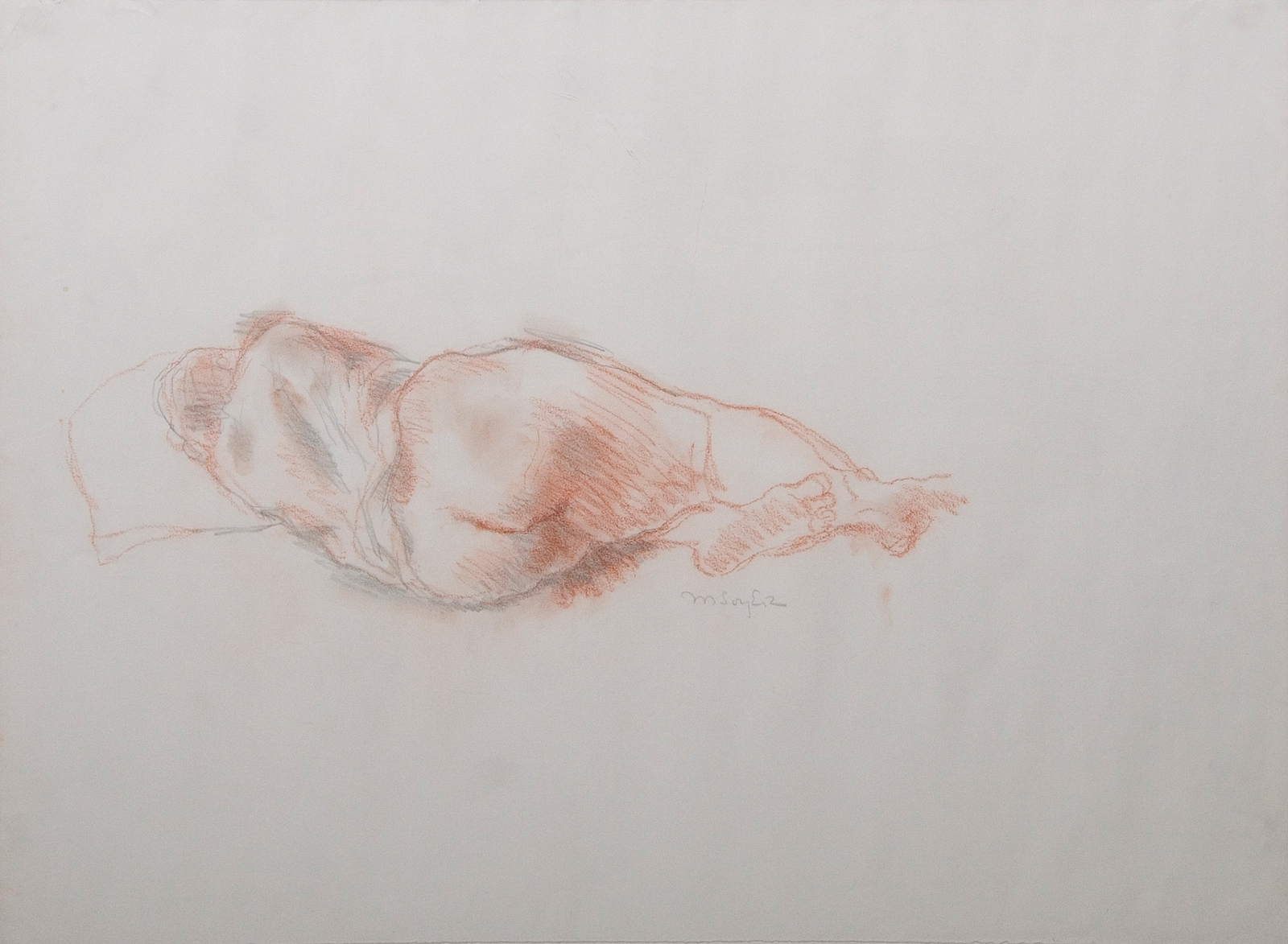Moses Soyer
“Our message is people,” Moses Soyer (1899-1974) said about the art of he and his twin brother Raphael. “The people we paint are the plain people we live and mingle with, people we know and understand best.” Soyer was a social realist painter and printmaker known for his canvases of unposed dancers and an ability to capture transient moods.
From his youth in Borisoglebsk, Russia, Soyer recalls encouragement from his father to pursue art — he brought them to the Tretyakov Gallery to study Russian masters and carried the Soyer children’s drawings in a book everywhere he went. After the family’s exile in 1912, Moses and Raphael stuck together, slow to adapt to New York but adamant about not giving up their dreams to become artists, taking classes together at Cooper Union and the National Academy of Design even as they dropped out of high school and took on odd jobs to support their family.
The brothers’ paths diverged after the Academy — they were worried their art was becoming too similar — where Moses went on to shed what he felt was a stodgy, overly-formal education by studying at the Ferrer Art School in Harlem under Ashcan artists Robert Henri (who introduced him to the art of Honoré Daumier, a significant influence for both Moses and Raphael) and George Bellows, followed by a period at the Educational Alliance Art School whose models, as Soyer put it, “consisted of the people who made up the neighborhood.” A scholarship in the late 1920s let him travel to Europe, where he discovered the art of Degas, another major influence, at the Louvre.
The 1930s brought Soyer back to America, where he created murals for the WPA and alongside Philip Evergood organized the Artists’ Union. Despite their efforts to differentiate, critics often noted a distinct similarity between the Soyer twins’ artistic proclivities — “tender portrayals of wan-faced shop girls, Bowery bums, and worn-out housewives” — though Moses was known for brighter, more spirited compositions. Carrying on a tradition begun in their 20s, the brothers would speak with each other every day, calling from their respective studios during breaks to discuss life, art, and everything in between.

